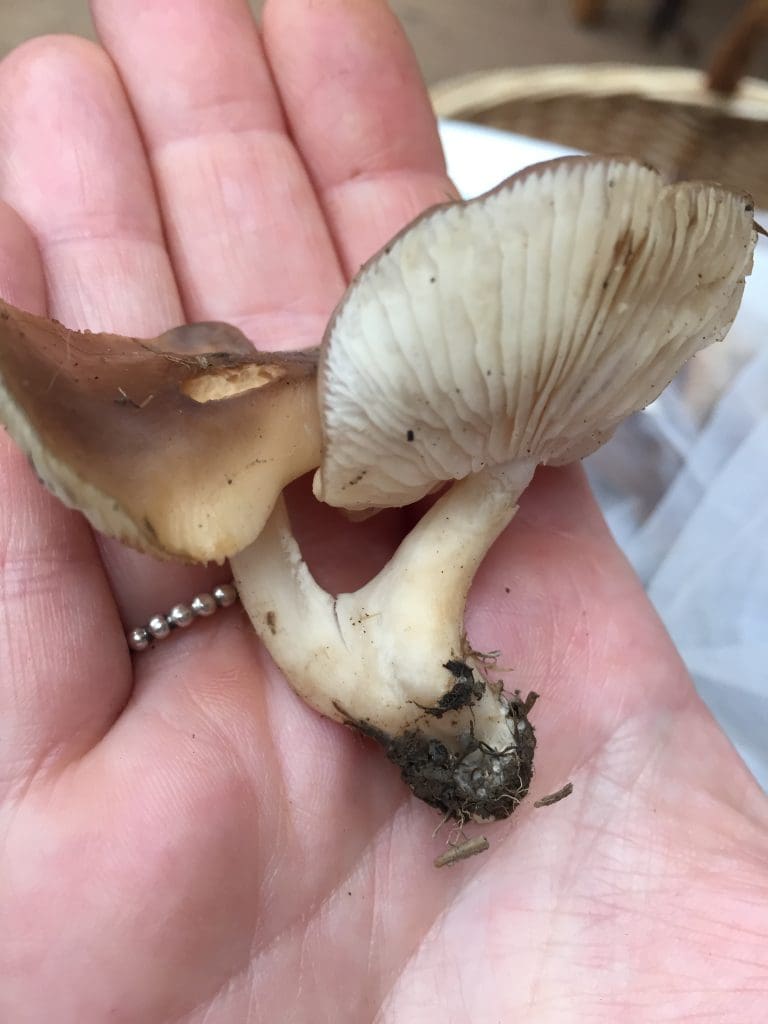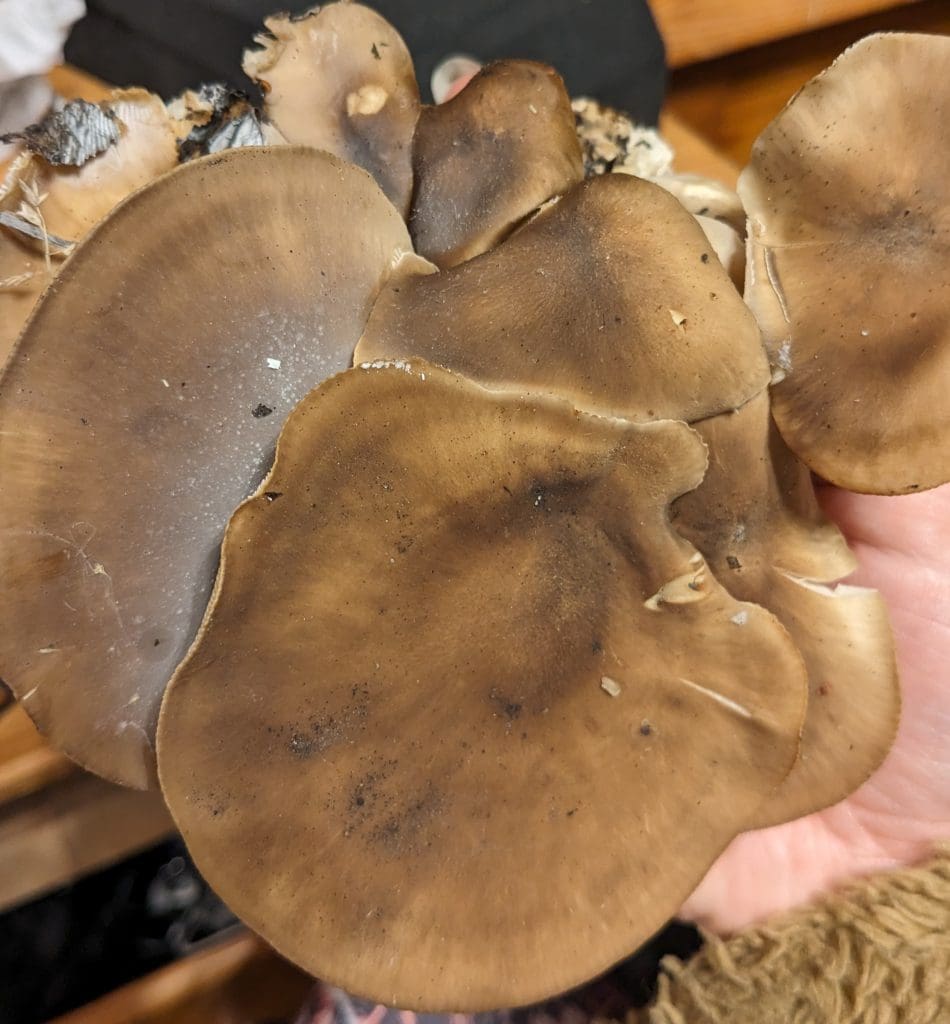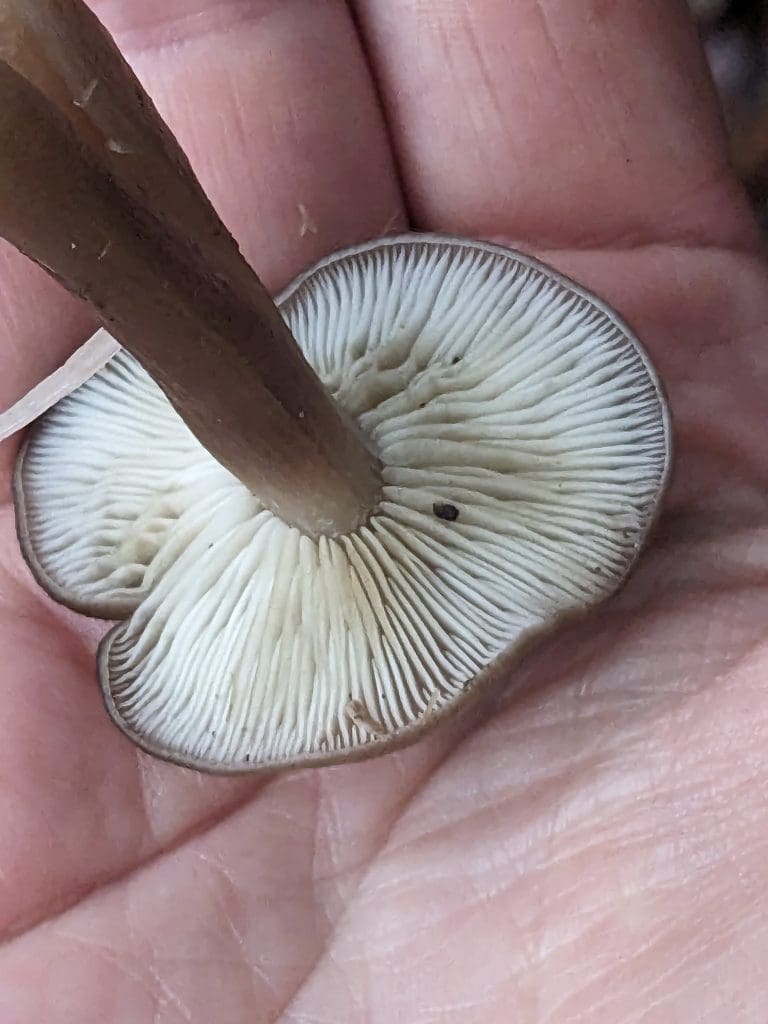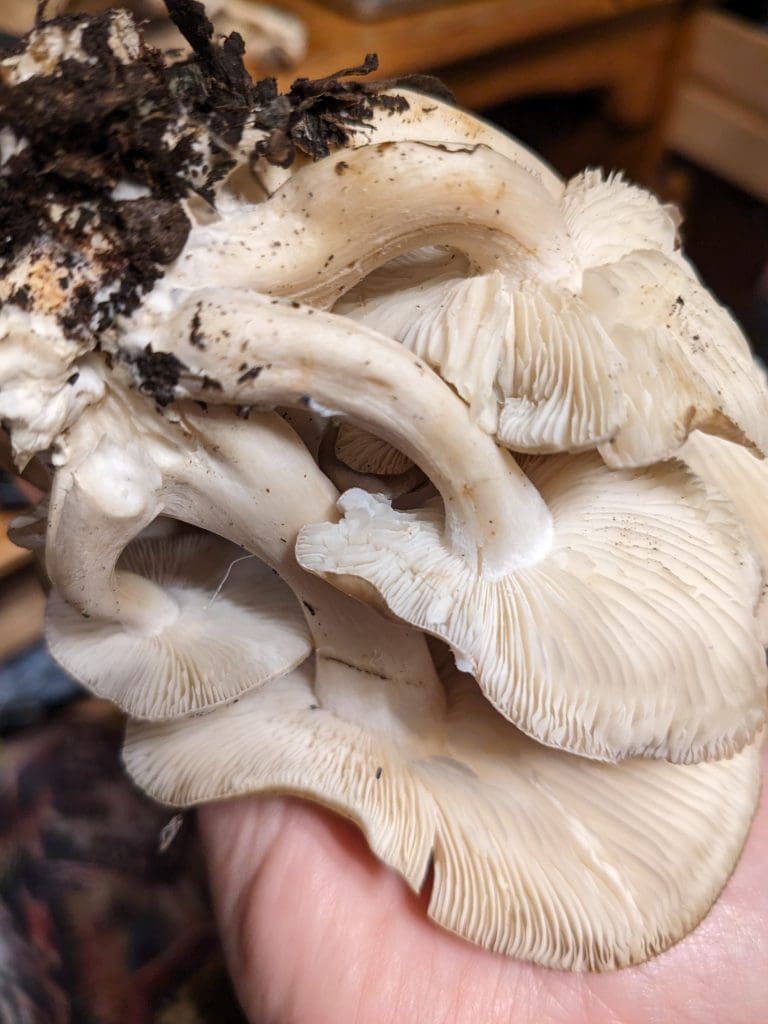Clustered Domecap Cap / Spring / Summer / Autumn / Edible
Scientific Name
Lyophyllum decastes
Common Names
Clustered domecap, Fried chicken mushroom, Gravel mushroom, Chicken mushroom
Family
Lycophyllaceae
Habitat
Late summer – November
Grows out the ground (not on wood) in a variety of places- grass, leaf litter, gravel and in grass under trees.
Common and numerous
Identifying Features:
Cap:
Can be variable.
Texture- can be greasy or have a satin appearance
Colour- often marbled colours of off white, grey’s and browns. When the cluster is separated the covered parts of the cap are often lighter.
Shape- convex to dome shape often distorted, irregular margin
4-10cm across
Cap margin slightly enrolled on young specimens
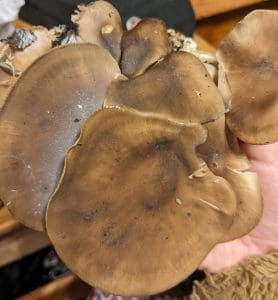
Stem:
Off white, more so with age
Young specimens have a hollow in the stem which can be lost with age
Often a little distorted in shape and fused together in clusters
No ring
4-8 cm long
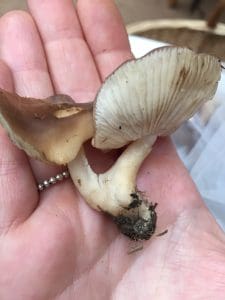
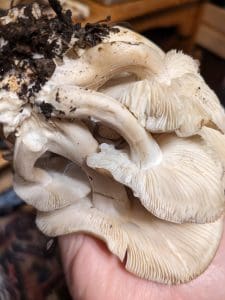
Gills:
Off white, yellowing with age
Densely arranged
Adnate and Adnexed (touching the stem either straight or with a curve) some time Emarginate
Shorter intermediate gills
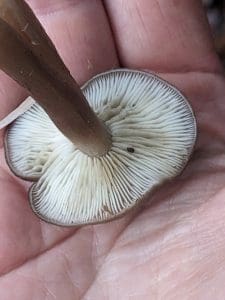
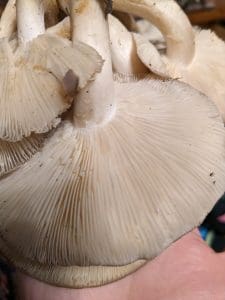
Smell:
Many people get a distinct boiled chicken smell or just pleasant mushroomy smell.
Spores
White
Known hazards
Causes gastric upset in some individuals
likes to grow in gravel of car parks so take into consideration the likely pollution accumulation.
Potential lookalikes
We don’t believe that this is a beginner mushroom
The key feature of clustered dome cap to separate it from its potentially toxic look-a likes is the way it’s clustered together as the name suggests, often even fused together at the base.
The Cucumber Cap, Macrocystidia cucumis, could possibly be confused but has many differences. First of all it has a different smell of cucumber or fish, it has a darker cap with a distinct light beige margin. The gills are free rather than being attached to the stem. With a pale pink brown spore print. The Cucumber cap is in the Tough shank family, many others in this family resemble the clustered dome cap but are usually smaller with more slender stems, none are known to be seriously toxic.
Many Tricholoma can have a similar features but mostly appear not clustered or fused together.
Uses:
In food
Known to cause stomach upset in some, but to those who can eat it it’s a delicious edible mushroom, texture is very meaty and a little like Enoki. Amazing just fried in butter but especially in soups or battered and fried.
If consuming for the first time, try only a small amount in case it doesn’t agree with you.
This mushroom must be cooked
Extra Tips and Fun Facts
The name Decastes come from the Latin meaning occurring in ten referring to its clustered feature.



